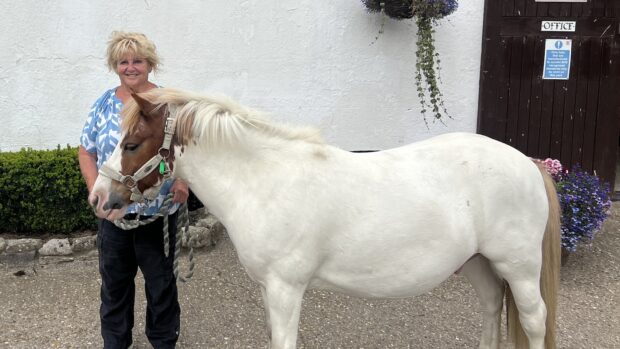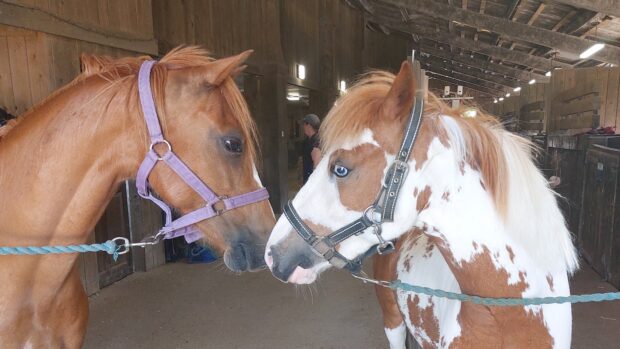Pammy Hutton shares her views on some of the current challenges faced by the equestrian industry
“What is the future of dressage?” It’s the question that continues to dominate worldwide. Amid the calls for horses not to be used in sport and for barefoot and bitless, many who are closely involved with the sport at all levels – and who understand the real issues – struggle to make headway against a rising tide of ever-louder but anonymous opinions.
There’s a strong push for the FEI to lead publicly. But a planned meeting with dressage stakeholders is not due until after the €400,000 (£342,000) prize-funded World Cup Finals in Riyadh, Saudi Arabia, next month. Many feel the timing lacks any sense of urgency. It’s also a strange choice of location for a welfare-based summit when Saudi Arabia currently has one of the worst equine doping records of any FEI-participating nation.
Higher overheads
My friend Tim Downes and I are talking again about hacking to 10 Downing Street to get the plight of riding schools noticed by those who could help.
Riding schools are the bedrock of UK equestrianism, particularly for first-generation riders, and many second-generation riders also use riding schools to further their development.
Small, local riding schools facilitate relatively affordable access to basic riding, often nurturing a hobby that will last a lifetime and inspire young equestrians to follow a career in the horse industry. Many of our elite coaches, Olympic riders and grooms started in a riding school.
Larger establishments, often operating nationally, develop the skills and knowledge that sustain and progress competitive riders’ abilities. They are also hands-on, practical training places for the equestrian industry’s future workforce.
Many riding schools are now under huge pressure to remain in business. While for many there’s no shortage of clients, a dearth of qualified, experienced staff and vastly increasing overheads are taking a serious toll. With electricity up 200% and our wage bill about to go up by £50,000, no wonder there are under-the-carpet deals. But not on my parade!
The issue is compounded by the many unlicensed and uninsured riding schools operating, plus “hobby” riding schools run to fund the proprietor’s horses on premises maintained by other income sources. Genuine livery yard businesses are similarly suffering.
Off-grid operations undercut authentic riding school or livery yards and influence market prices. Giving lessons on unlicensed “schoolmasters” and “loaning for a financial contribution” arrangements sail dangerously close to the wind legally.
Over the past 40 years, equine college courses have prompted a move to academic education in the horse industry. Yet how to read your horse cannot be learnt in the classroom alone. It requires real, live horses and input from experienced horse people. This trend has contributed to a significant reduction of available, practical and competent staff.
Riding schools were slow to react to changing times. However, within the confines of local competition from less orthodox businesses, they have started to offer strong career options with competitive salaries. But this has not yet begun to solve the real-world workforce issue.
The British Horse Society continues to offer practical qualifications and works hard via its career transition fund to encourage people into the riding school industry. But will any riding schools be left for emerging professionals to work in?
New dressage tests
The new British Dressage tests are printed out and on my desk. There are four to six tests at each level – but where is advanced medium 2?
It’s good to see so many webinars and face-to-face opportunities around the country for riders to gain insight and understanding of the new test structure.
That all tests are now qualifiers will make life easier for riders and organisers alike, and has been well received.
I’m often asked how to improve results. One simple tip: ride the test as it says – the letters don’t move. Also, prepare the exercises – the horse didn’t read the test.
Inspired by a “new clothes to suit the horse” marketing slogan, I’ve ordered black and white to match my mare. Will I look like a Friesian heifer or will monochrome become the in thing?
● Are financial pressures becoming too great for riding schools? Write to us at hhletters@futurenet.com, including your name, nearest town and country, for the chance for your letter to appear in a forthcoming magazine
- This exclusive column will also be available to read in Horse & Hound magazine, on sale Thursday 28 March
You might also be interested in:

‘On the brink of disaster’: stark warning for future of Britain’s riding centres

‘A grave error to think this is just a dressage problem’: new forum agreed to help tackle welfare concerns

Concern as study found dressage horses behind the vertical earned higher scores

Subscribe to Horse & Hound magazine today – and enjoy unlimited website access all year round
Horse & Hound magazine, out every Thursday, is packed with all the latest news and reports, as well as interviews, specials, nostalgia, vet and training advice. Find how you can enjoy the magazine delivered to your door every week, plus options to upgrade your subscription to access our online service that brings you breaking news and reports as well as other benefits.




